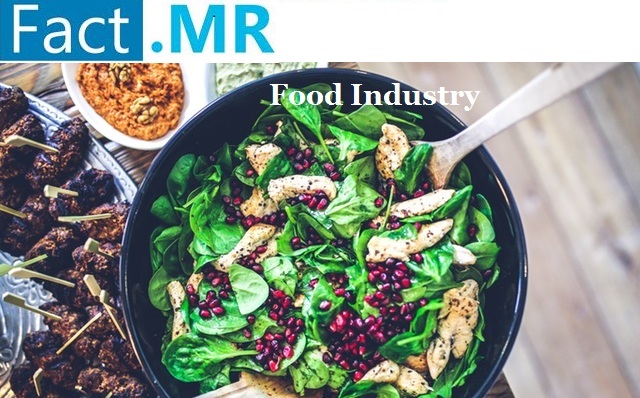Enzyme stabilizer sales are highly influenced by increasing demand from food processing and animal nutrition industry. The growing use of enzyme stabilizer in the production of biodiesel is paving the way for enzyme stabilizer market growth. The global enzyme stabilizer market is projected to witness an increase in volume sales of over 3,000 tons in 2019 over 2018, according to recent Fact.MR report. Enzyme stabilization is also gaining prominence for the application of wool finishing and cotton sizing. FactMR’s study offer an accurate forecast on the enzyme stabilizer market for the period between 2013 and 2027. The enzyme stabilizer market has been envisaged to record a moderate CAGR of over 4.0% through 2027.
Food processing industry accounts for the highest demand for enzyme stabilizers. Starch, an important ingredient in many food items, is manufactured using stabilized enzymes. The growing use of enzyme stabilizers in producing essential food ingredients is likely to be a key growth factor for the enzyme stabilizer market. According to the study, enzymes such as cellulose and pectinase continue to find widespread application in the production of jellies, syrups, and jams from vegetables and fruits. The study opines that among the various enzymes used in the food industry, hydrolases continue to account for the highest demand.
The FactMR study opines that demand for enzyme stabilizers is also likely to grow on account of prevailing health and wellness trend. Growing demand of fruit juices has influenced brands to optimize the quality without significantly raising the costs. The use of enzymes as competent biocatalysts in fruit juice manufacturing process is witnessing a surge, creating opportunities for stakeholders in the enzyme stabilizer market. According to the report, among the various enzymes used for fruit juice production, demand is especially strong for pectinases as the pectin structure breakdown supports the purification process.
You can Request a Sample Copy from here – https://www.factmr.com/connectus/sample?flag=S&rep_id=2660
Manufacturers in the food industry have been seeking advanced technologies to meet the evolving demand of consumers. Enzymes’ clean label (GRAS, generally recognized as safe) consideration from regulatory point of view is prompting their extensive use in food technology. The application of enzyme stabilizers to improve flavor, texture, digestibility, and nutritional value of the food products is likely to create opportunities in the long run.
The growing development in protein technology has fueled the use of commercial enzymes in food industry, making them integral to the processing of a range of food and beverage products. The technical enzyme preparations also exhibit economic benefits, owing to their lowered process costs – this is a key factor driving their adoption among end-users.






